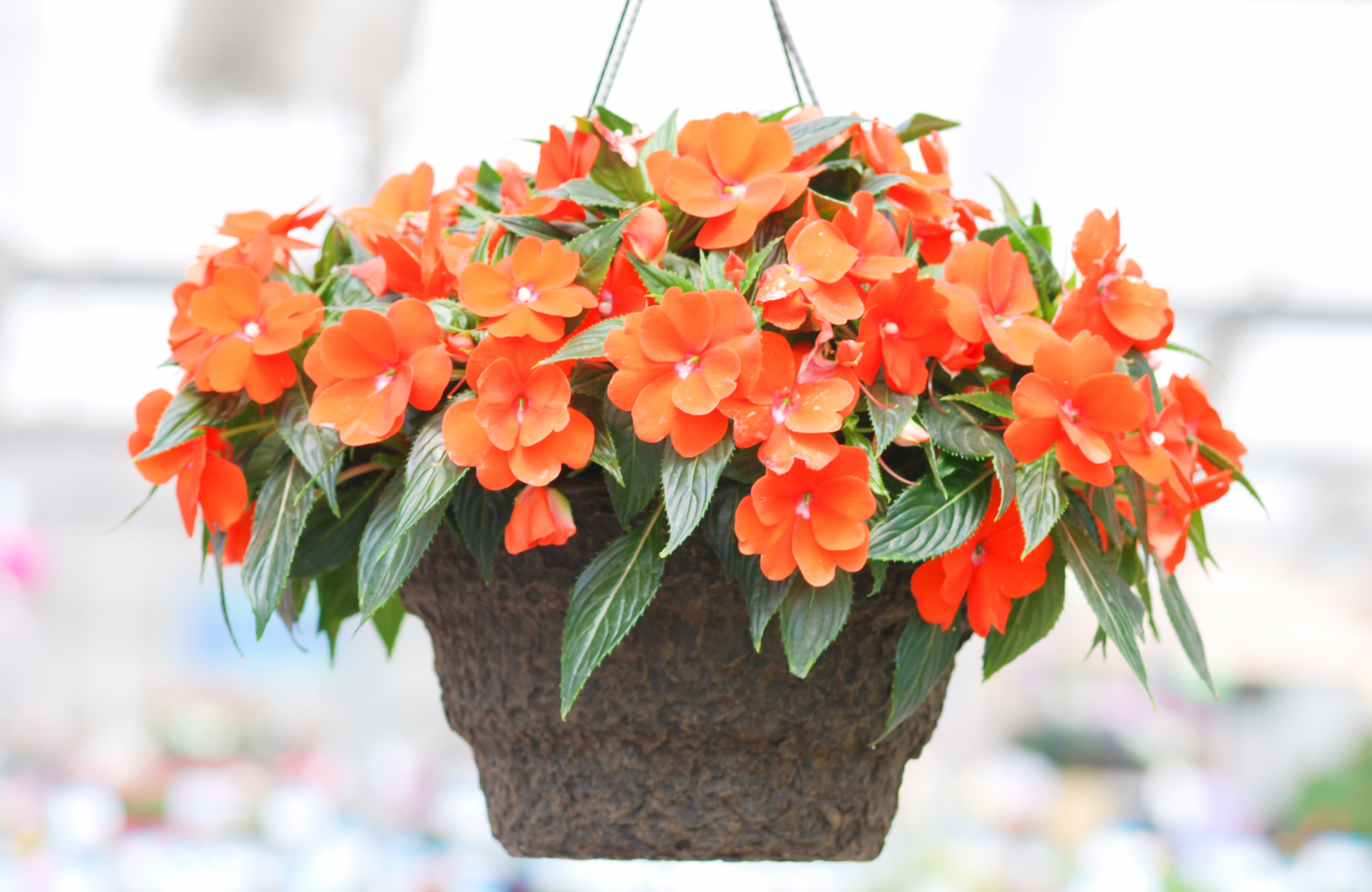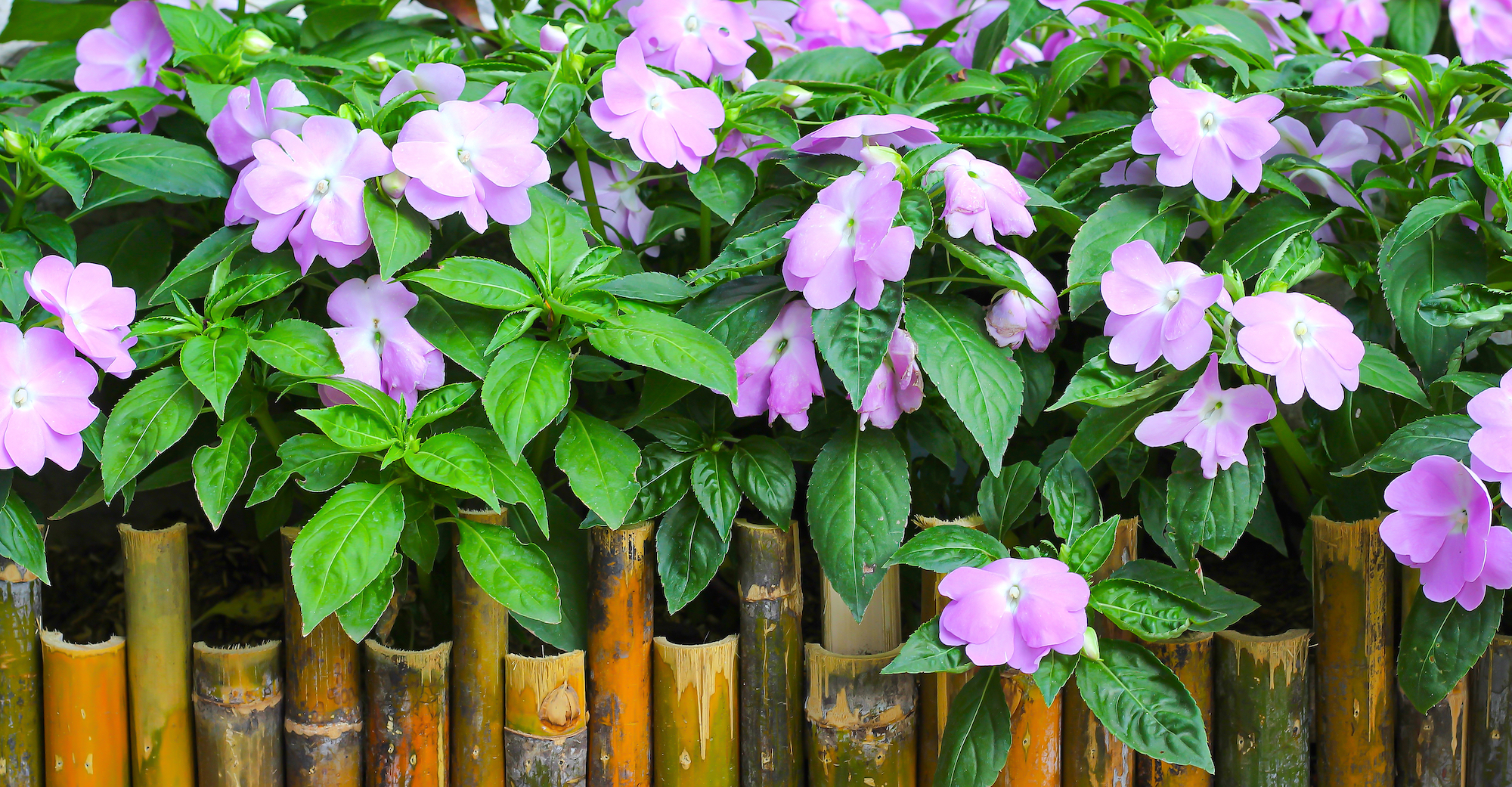
Colorful impatiens!
Planting, Growing, and Caring for Impatiens
The Almanac Garden Planner - Use It Free for 7 Days!
Plan your 2025 garden with our award-winning Garden Planner.
Types
- Lollipop series (I. walleriana) ‘Fruit Punch Rose’ is a compact, well-branched variety with superbly vivid colors.
- Tom Thumb Series (I. balsamina) is a dwarf variety with large, double, brightly colored flowers.
- Beacon® impatiens are highly resistant to downy mildew and will keep blooming reliably until frost.
- Swirl Series (I. walleriana) has pretty pink and orange flowers with petals in red.
ADVERTISEMENT
My Impatiens that i bought from nursery 10 days ago is not thriving. I repotted in nursery itself but now all the branches have drooped. Did i kill it ? it was flowering in nursery. Please help.
I have a double impatient plant , is it an inside or outside plant? How do I look after it as I’m new to growing flowers.
Strong winds and rain made my plant wilt and look sick. I put it indoors on a window ledge and it thrives. Might help.
Hi Violet, Thanks for your question. Your double impatiens can be either a house plant or grown outdoors. They are best known as garden bed plants that provide a pop of color throughout the growing season, but are also well suited for containers and hanging baskets. Since impatiens are a tropical plant, they are very sensitive to cold and should not be put outdoors or planted until there is no threat of frost.
Impatiens need rich, moist, and well-drained soil and do best in partial shade. They need regular water, so keep them moist, but not too wet. Impatiens grown in containers or hanging baskets will need more water.
I live I Hawaii my impatient plant is about four years old and it tend to droop I water it but that only helps a little do impatients get all and die after a period of time
Aloha, Jim,
You’ve done well to keep an impatiens plant for several years; they are generally grown as annuals but of course you have ideal conditions. Watering impatiens anywhere—too much or too little—can be tricky. Your plants might be getting too much water; that could cause them to be saturated and droop. If they are drooping in the midday, when the temp is the warmest in hot sun, they may be drooping in response but might perk up later in the day if you leave them alone. Then again it might be time to start or purchase some new ones. We hope this helps!
I see HUGE mounds of impatiens all over. They seem pretty tall and densely packed. How do you plant to get those huge mounds? Do you have to have a large tall pile of dirt to achieve that? Just planting them ground level doesn't have the same effect. Thanks much
My family has had a variegated leaf impatiens since 1960 and have dtaken many cuttings to continue propagation. My mom dies in 2012 and I have had her last plant which I am sad to say is dying. I have take cuttings and placed in water, but they do not seem to look well. The unusual thing this time was that at the end of one of the stalks it became mushy. Last year one of the plants stalks at the base became mushy and try as we might, we never got an offshoot to root. . I am trying to root some cuttings, but they look very droopy. I had been watering the plant and giving it all in one Rose and Flower Care by BioAdvanced weekly ( diluted) as this was advised by a gardener. It has been doing well up until this past week. i am heartbroken as I have never seen another varigated leaf impatints. My mother called it Lady of the White House. So for 50+ years we have kept this plant going. Is there any suggestion That would help this plant to live and root? Thank you.
My impatiens in a pot has lots of buds, but they dont open. The ones that do open just hang limp. What's wrong? Thanks.
Try moving it to a slightly brighter spot or adjusting your watering. Lack of light can produce subpar blooms, as can over- or underwatering. Look for other signs that the plant could be struggling, such as drooping, yellowing leaves or brown leaf tips.












